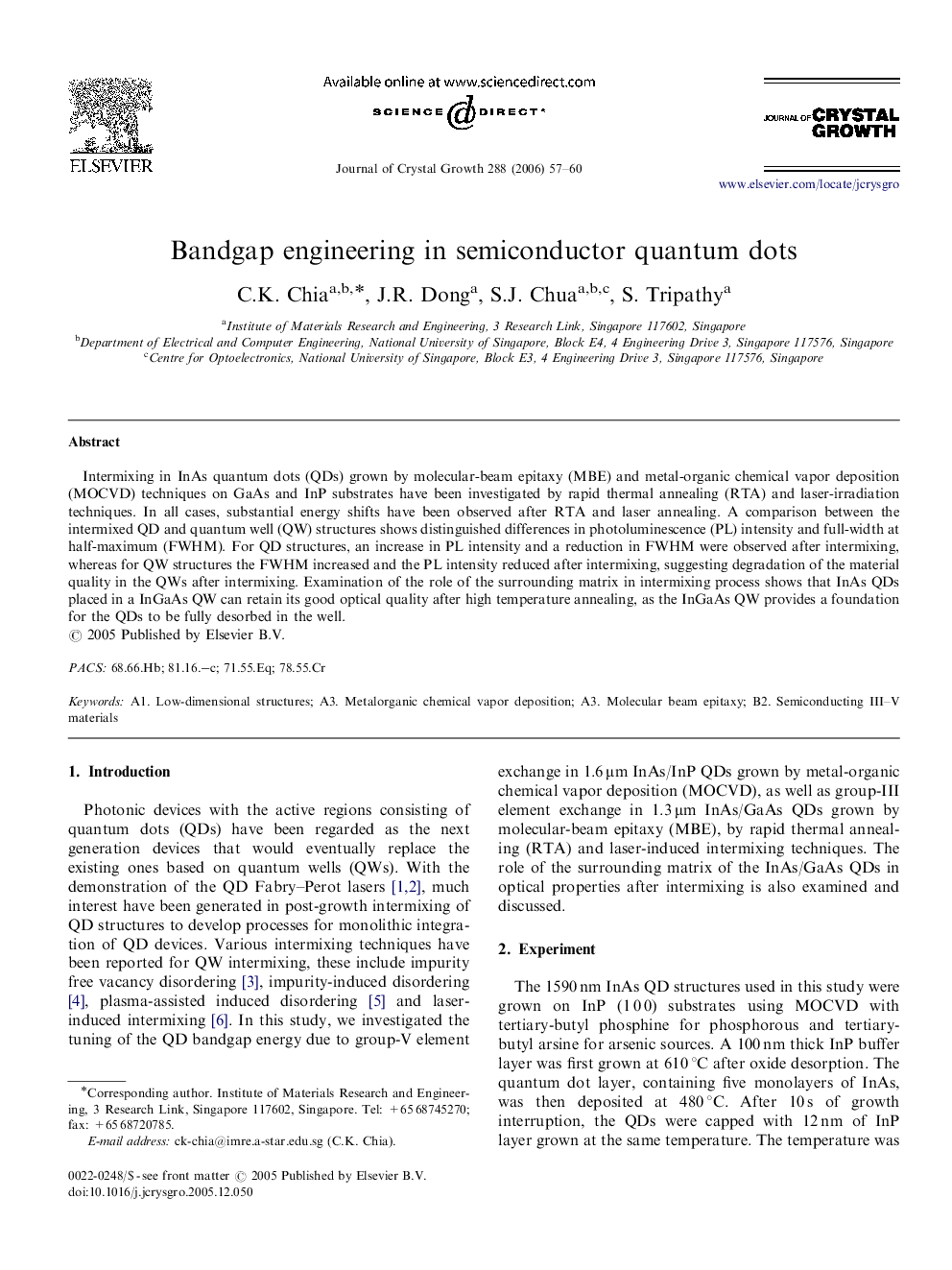| Article ID | Journal | Published Year | Pages | File Type |
|---|---|---|---|---|
| 1796410 | Journal of Crystal Growth | 2006 | 4 Pages |
Intermixing in InAs quantum dots (QDs) grown by molecular-beam epitaxy (MBE) and metal-organic chemical vapor deposition (MOCVD) techniques on GaAs and InP substrates have been investigated by rapid thermal annealing (RTA) and laser-irradiation techniques. In all cases, substantial energy shifts have been observed after RTA and laser annealing. A comparison between the intermixed QD and quantum well (QW) structures shows distinguished differences in photoluminescence (PL) intensity and full-width at half-maximum (FWHM). For QD structures, an increase in PL intensity and a reduction in FWHM were observed after intermixing, whereas for QW structures the FWHM increased and the PL intensity reduced after intermixing, suggesting degradation of the material quality in the QWs after intermixing. Examination of the role of the surrounding matrix in intermixing process shows that InAs QDs placed in a InGaAs QW can retain its good optical quality after high temperature annealing, as the InGaAs QW provides a foundation for the QDs to be fully desorbed in the well.
